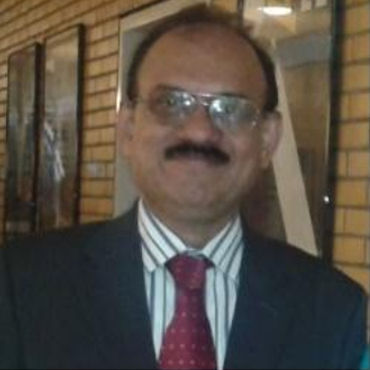
Dr. Y.S. Mayya
Department of Chemical Engineering, Indian Institute of Technology, Bombay
Bio-data:
Education:
M.Sc. (Physics) 1974: Mysore University (then PG Centre in Mangalore),
Ph. D (Physics) 1994: Mumbai University,
Present Affiliations:
Professor (Adjunct) at the Department of Chemical Engineering, IIT Bombay, Mumbai;
Adjunct professor to Centre for Advanced Research in Environmental Radioactivity (CARER), Mangalore University
Teaching:
Aerosol Technology, Stochastic Processes & Experimental Methods in Chemical Engineering
Guiding students towards their Ph.D and M.Tech degrees.
Former Affiliation:
Head Radiological Physics & Advisory Division, Bhabha Atomic Research Centre, Mumbai
Areas of Interest:
Electrical studies on aerosols, droplet break-up; Electrodynamic balance, nanoparticle generation and modeling, Nuclear Aerosol behaviour, Natural radiation, radon and public exposure, Epidemiology and Radiation Physics.
Publications:
153 papers in refereed Journals and over 100 in conference proceedings
Professional Honors:
President of Asian Aerosol Research Assembly during the years: 2005-2007
Member of Editorial Board of Journal of Aerosol Science (Elsevier) during: 2004-2014
Abstract:
Title: Theoretical and modeling perspectives in environmental radon and decay product studies
Some of the important motivations for studying 222Rn , 220Rn (radon and thoron)and their decay products stem from the need to assess indoor population exposures and protect Uranium mine workers, as well as for various application in tracer, uranium exploration and natural environmental effect studies. Theoretical and modeling studies have played a major role in advancing the subject in these areas. Of particular historical significance are the development of dosimetric models, understanding the origin of radon due to recoil emanation, decay product-aerosol interaction mechanics in the atmosphere, environmental transport and application to global circulation modeling. In recent times, newer technological applications both in radiation protection as well as in environmental studies have brought in a need to sharpen various analytical tools. With the availability of sophisticated methods of detection and advancement in computational approaches in fluid mechanics, population balance equations, time series analysis and statistical methods, radon studies offer newer avenues for research with enhanced perspectives on the underlying processes. This presentation reviews these developments in the light of dosimetric, environmental and technological applications.
